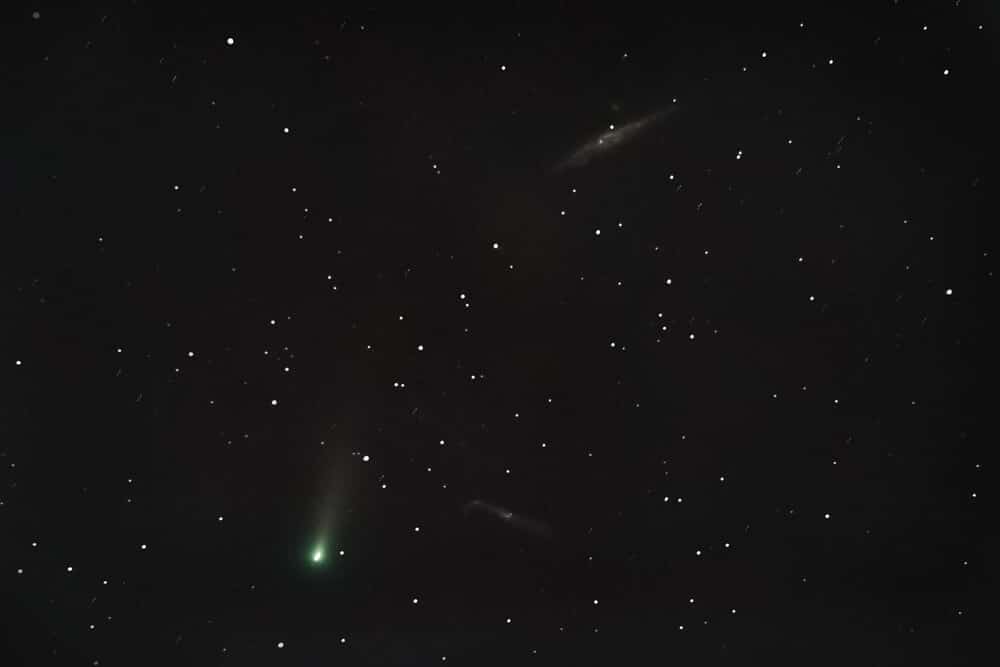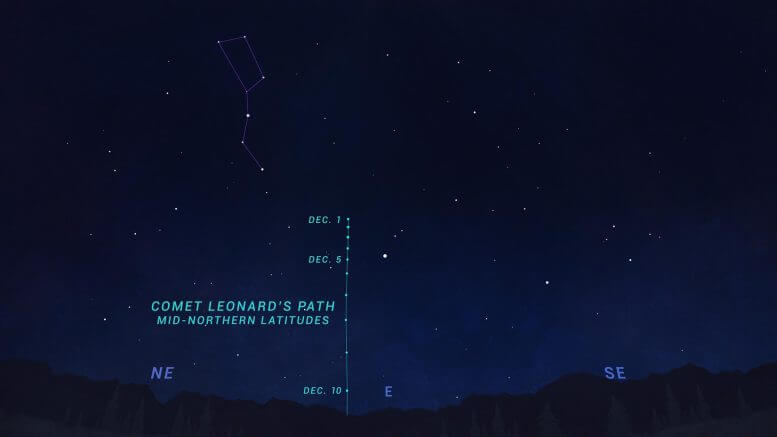However, these two astronomical events will be difficult to observe - the meteor shower will be engulfed in the light of the moon, at least until the moon sets at 2 am, while the line of sight of the comet is too close to the sun and it will glow in the twilight of the sunrise

Comet Leonard, which moves at a speed of about 150,000 km/h and accelerates as it approaches the sun, is about to brighten and appear in the morning sky later in the second week of December. It is not yet visible to the naked eye, but its shape can already be clearly seen in telescopes.
The light intensity of the comet is estimated at about 6.8. For comparison Venus, one of the bright planets shines at an intensity (as seen from Earth) of minus 2. The lower the number the better the object in question is visible without a telescope. It is estimated that its brightness may increase to 4 around December 12th, which is about the time it will reach its closest distance to Earth, just weeks before it reaches its smallest distance from the Sun, but the angle will place it in predawn twilight and therefore difficult to observe. It is difficult to predict the brightness and visibility of comets, so it is not clear whether they will be visible to the naked eye.

In the first two weeks of December it will be possible to observe the comet in the east before sunrise when it will pass between the star Arcturus and the handle of the Big Dipper. It will approach the horizon just as it is closest to Earth, meaning it will likely be brighter but also more challenging to view. Then, around December 14th, it will become a sunset object for only a short time. At this point it will once again begin its long distance from the Sun and its brightness will gradually fade.
And regardless of the timing, the Geminid meteor shower is the highlight of the December sky every year. This year's meteor shower peaks on the night between December 13th and 14th, when the moon will be almost 80% full, which will impair viewing ability. It's not ideal but the bright moon will set around 2am local time leaving a few hours for pre-dawn meteor viewing.
The meteors appear to be coming from the direction of "Gemini" which will be high in the evening sky towards the west. While most annual meteor showers are caused by Earth's passage through trails of dust-sized particles ejected from comets, the Geminids are one of the few meteor showers that are caused by debris blown from the surface of an asteroid into an orbit that crosses Earth's orbit—in this case, the source asteroid is Phaethon.
Recently, NASA scientists discovered findings that suggest that the distinction between asteroids and comets may be less clear-cut than we realized, with sodium ejected from Python performing the same role of evaporating ice on comets.
